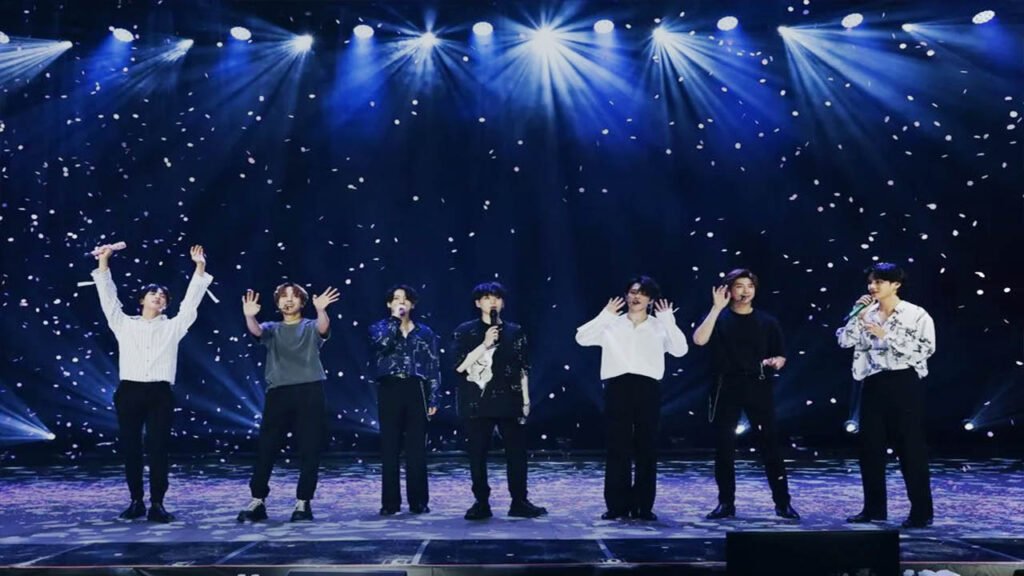Welcome music enthusiasts to a mesmerizing journey through the heart of classical music, where we will unravel the timeless beauty of a classical concerto. This three-movement work stands as a pinnacle of musical excellence. A classical concerto, known for its sophistication and grandeur, is a composition that showcases the harmonious blend of solo instruments, typically a piano or a violin, with an orchestral accompaniment. It is a virtuosity showcase, highlighting the soloist’s technical prowess against the backdrop of a majestic orchestral tapestry. Join us as we delve deeper into the intricacies of this musical form, dissecting its structure, emotion, and sheer elegance.
Summer issue out now! Our features include:
🎵@darbarfestival brings sitar and sarod stars to the Barbican
🎵@CliveMyrieBBC on why he needs Beethoven on the battlefield
🎵Pairing films with a live orchestra
Subscribe today to get your copy https://t.co/HeRO0eV2TK pic.twitter.com/gCcs3eNAPg
— Classical Music (@ClassicalMusic_) July 1, 2024
Introduction: Exploring the Beauty of Classical Concertos
A classical concerto is a three-movement work that showcases the brilliance of orchestral composition and virtuosic solo performance. Dating back to the Baroque era, classical concertos have evolved into masterpieces that continue to captivate audiences worldwide.
The History of Classical Concertos
Classical concertos originated in the early 18th century, with composers like Antonio Vivaldi and Johann Sebastian Bach pioneering this form of musical expression. These composers sought to highlight the contrast between a soloist and the accompanying orchestra, leading to the development of the concerto genre.
In the Classical and Romantic periods, composers such as Wolfgang Amadeus Mozart, Ludwig van Beethoven, and Pyotr Ilyich Tchaikovsky expanded on the concerto form, introducing new structural elements and pushing the boundaries of musical creativity.
The Structure of a Classical Concerto
A classical concerto typically consists of three movements: a fast opening movement, a slow, lyrical second movement, and a lively finale. The first movement often features a brilliant display of technique, while the second movement contrasts with its melodic beauty and emotional depth.
The final movement of a concerto is known for its energetic and triumphant character, bringing the work to a thrilling conclusion. This structure allows for the soloist to showcase their technical prowess and musical interpretation, creating a dynamic interplay between soloist and orchestra.

The Origins of Classical Concertos: A Brief Historical Overview
Classical concertos, renowned for their three-movement structure, have a rich history dating back to the Baroque era. Originating in the late 17th century, the concerto evolved as a form where a solo instrument or a small group of instruments contrasted with an orchestral ensemble.
The Baroque Era: Birth of the Concerto
The Baroque era (1600-1750) marked the concerto’s birth, with composers like Antonio Vivaldi and Johann Sebastian Bach paving the way for this musical genre. Vivaldi’s famous ‘Four Seasons’ exemplifies the virtuosic solo passages and vibrant orchestral accompaniment characteristic of early concertos.
The Classical Period: Refinement and Formalization
During the Classical period (1750-1820), composers such as Wolfgang Amadeus Mozart and Ludwig van Beethoven refined the concerto form. Mozart’s Piano Concerto No. 21 is a prime example of the elegance and lyricism associated with Classical concertos.
- The Classical concerto typically consists of three movements: fast-slow-fast.
- Each movement serves a distinct purpose, showcasing the soloist’s technical prowess and interpretation ability.
The Structure of a Classical Concerto: Analyzing its Three-Movement Form
A classical concerto is a three-movement work showcasing composers’ brilliance and artistry through a carefully structured framework. This composition has stood the test of time, remaining a cornerstone in classical music.
Exposition
The first movement, known as the exposition, serves as the introductory section of the concerto. It presents the main themes that will be explored and developed throughout the piece. This section typically features virtuosic passages for the soloist, setting the stage for the musical dialogue between the soloist and the orchestra.
Development
In the second movement, the development and the initial themes undergo transformation and elaboration. This section is characterized by intricate variations and modulations, showcasing the composer’s creativity and skill in weaving together different musical elements. The tension builds as the music unfolds in unpredictable and captivating ways.
Recapitulation
The final movement, the recapitulation, brings the concerto to a satisfying conclusion by restating the primary themes introduced in the exposition. This section often features thrilling cadenzas for the soloist, allowing them to showcase their technical prowess and musical interpretation. The orchestra and soloist engage in a dynamic dialogue, culminating in a brilliant and memorable finale.
Movement I: Unraveling the Elegance of the First Movement
As the opening act of a classical concerto, the first movement sets the tone for the entire musical piece. Known for its majestic introduction and intricate melodies, this movement captivates audiences with its charm and sophistication.
The Grand Introduction
The first movement typically starts with a bold and dramatic orchestral introduction, signaling the beginning of a musical journey. The orchestra and soloist engage in a musical dialogue, portraying a sense of anticipation and excitement.
This exhilarating movement showcases the performers’ virtuosity, taking the listeners on a captivating musical expedition.
Themes and Variations
In the first movement, the composer introduces various themes developed and elaborated upon throughout the piece. These motifs create a cohesive structure, weaving a progressive musical tapestry.
- The flourishing melodic lines interplay between the orchestra and the soloist.
- The dramatic changes in dynamics add depth and intensity to the music.
- The climactic cadences build anticipation and suspense, leading to moments of resolution and fulfillment.
Movement II: Delving into the Emotional Depth of the Second Movement
When exploring the second movement of A Classical Concerto, we immerse ourselves in a realm of emotional richness. This segment often contrasts the first movement, delving deeper into poignant melodies and exquisite harmonies.
Expressive Melodies
The second movement captivates audiences with its expressive melodies, drawing listeners into a world of introspection. The interplay between the instruments evokes a sense of empathy and serenity.
Subtle Dynamics
The subtlety of dynamics in this movement enhances the emotional impact of each musical phrase, creating a mesmerizing and captivating experience. The orchestral arrangement underscores the beauty of the composition.
- Soft passages transition seamlessly into powerful crescendos
- The graceful interplay of strings and winds enhances the dramatic effect
Movement III: Experiencing the Vibrancy of the Final Movement
As the classical concerto reaches its final movement, the audience is treated to a crescendo of emotions and musical dynamism. This is the moment where the culmination of the entire performance comes together, leaving a lasting impact on the listeners.
Emotional Intensity
During the final movement, the orchestra reaches a crescendo, infusing the piece with passionate emotions that resonate throughout the concert hall. The vibrant energy of the musicians is palpable, captivating the audience and drawing them into the musical journey.
Harmonious Transitions
The final movement often showcases seamless transitions between different musical themes, demonstrating the composer’s skill and artistry. The melodic phrases intertwine harmoniously, creating a rich tapestry of sound that leaves a lasting impression.
- Transitioning from the calmness of the second movement to the dramatic climax of the final movement
- Exploring variations in rhythm and tempo to build anticipation and excitement
Interplay of Resources: Understanding the Orchestration and Instrumentation
Understanding the orchestration and instrumentation is crucial when delving into the intricacies of a classical concerto. These two elements play a pivotal role in shaping the composition’s overall sound and dynamics.
The Role of Orchestration
Orchestration refers to the way in which different musical instruments are utilized within a piece of music. In a classical concerto, the orchestration is carefully crafted to highlight the solo instrument (usually a violin, piano, or cello) while blending harmoniously with the accompaniment.
The Importance of Instrumentation
On the other hand, instrumentation deals with selecting and arranging instruments within the orchestra. Each instrument contributes unique timbres and colors to the overall texture of the concerto, creating a rich and diverse sonic landscape.
- Strings: In a classical concerto, the string section forms the backbone of the orchestra, providing lush harmonies and melodic support.
- Woodwinds: Woodwind instruments add warmth and lyrical qualities to the music, often featured in expressive solos.
- Brass: Brass instruments bring power and grandeur to the concerto, enhancing climactic moments with bold sound.
- Percussion: Percussion instruments provide rhythmic drive and accents, adding rhythmic complexity to the composition.
Significance and Legacy: Impact of Classical Concertos in Music History
A classical concerto, a three-movement work, is profoundly significant in music history. Its legacy echoes through generations, showcasing the mastery and innovation of renowned composers.
The Timeless Appeal
Classical concertos have captivated audiences for centuries with their intricate melodies and harmonies. The fusion of soloist and orchestra creates an enchanting musical dialogue, transporting listeners to a bygone era.
Evolution of Composition
Classical concertos have evolved from the Baroque period to the Romantic era, embracing new musical styles and techniques. Composers such as Mozart, Beethoven, and Tchaikovsky have left an indelible mark on the genre.
- Innovative orchestration techniques
- Expressive use of dynamics
- Structural complexity
Frequently Asked Questions
- What is a concerto?
- A concerto is a musical composition usually composed for a solo instrument accompanied by an orchestra or a smaller ensemble. It typically consists of three movements.
- What makes a concerto a ‘three-movement masterpiece’?
- Concertos are often structured in three movements: fast, slow, and fast. Each movement presents a different mood and tempo, showcasing the soloist’s virtuosity and the interaction between the soloist and the orchestra.
- What is the significance of classical concertos?
- Classical concertos are considered masterpieces due to their sophisticated composition, technical challenges for the performers, and the ability to evoke emotional responses from the audience. They represent the pinnacle of musical artistry.
- How are classical concertos different from other musical forms?
- Classical concertos differ from other musical forms like symphonies or sonatas in that they highlight a solo instrument or group of instruments within an orchestral context. This allows for a dynamic interplay between the soloist and the accompanying ensemble.
- What can we expect from a classical concerto performance?
- A classical concerto performance promises to enchant the audience with its blend of technical prowess, expressive melodies, and rich orchestration. It offers a captivating journey through musical themes and variations.
Final Thoughts: Revealing the Splendor of a Classical Concerto
In conclusion, a classical concerto is a three-movement work that showcases the seamless interaction between the soloist and the orchestra, highlighting virtuosity, emotion, and musical dialogues. The concerto takes the audience on a musical journey filled with drama, contrast, and resolution through the allegro, adagio, and final movements. The soloist’s technical prowess, combined with the orchestral backdrop, creates a harmonious blend of sound that captivates listeners and evokes a range of emotions. By dissecting each movement and understanding its intricacies, one can truly appreciate the depth and beauty of a classical concerto as a masterpiece of the classical music repertoire.




